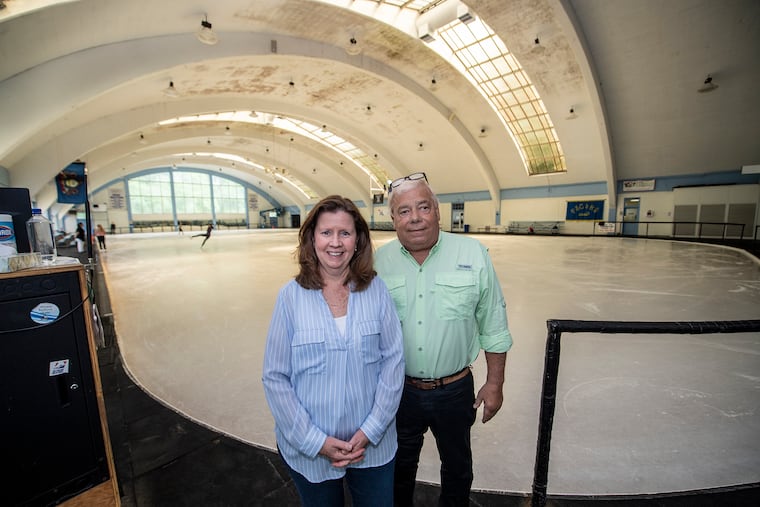$6 million needed to save historic Ardmore skating club, the nation’s first
The Philadelphia Skating Club and Humane Society has been slowly deteriorating for years.

Fran Mycek says he “kind of grew up” with the Philadelphia Skating Club and Humane Society, but in terms of the organization’s more than 170-year-old history, he’s a virtual newcomer at age 67.
His father ran it for 40 years, and various family members have been involved in the club since its hangar-like headquarters was built at the end of a narrow, dead-end street in Ardmore in 1937.
But the building has been slowly starting to creak, and Mycek, the club general manger, and his wife, Mary, the office manager, are seeking funds to preserve the historic structure.
“With roots dating back to 1849,” the club “has played an outsized role in the development of figure skating as an American pastime and competitive sport,” says Kathleen Abplanalp, director of historic preservation at the Lower Merion Conservancy. She calls the building “an engineering marvel,” although the intricate technology it uses has been obsolete since the World War II era.
The 1849 roots and the “Humane Society” part of its name are perhaps best considered together.
It was the first skating club in the United States. In the early days, its members skated on rivers and lakes. Eventually there was a clubhouse on what is now Boathouse Row, and in 1861, it merged with the Humane Society and took on the added role of rescuing skaters who fell through the ice.
Members had to carry a small reel of stout twine to rescue people who fell through.
The club bought land for a new headquarters from Haverford College in 1937, and the following year, the Philadelphia Skating Club and Humane Society’s building opened its doors. In 1941, the first national figure skating championships were held there.
Nick Cramsey, an architect helping to plan the club’s renovation, calls it “a captivating structure ... cutting edge, using concrete as efficiently as possible.”
The building was designed by European-born architect Anton Tedesco with a roof less than three inches thick, about the thickness of a baseball.
Hershey Park Arena, built in 1936, has a similar design, and for a few years, the design was used for airplane hangars and some manufacturing plants before fading into history, replaced by other methods.
With just 350 members, a slight decline from recent years, the club cannot finance the project itself and is seeking to aid the fundraising by having it put on the National Register of Historic Places.
Their $6 million wish list — a professional fund-raiser has already been hired — includes new windows, new skylights and, most important, an upgrade to the geriatric compressors that work 24/7 to make and preserve the ice.
Mycek says the deterioration “has been going on for years. … We just kept putting Band-Aids on the place.”
About a year ago, a new executive committee agreed to take aggressive steps to stop the bleeding.
While much of the project would be invisible to the untrained eye, it would seek to keep the 20th-century look that seems almost older, like a Currier and Ives print.
The building “retains nearly all of its historic fabric,” says Abplanalp, including its historic and artfully designed second-floor members’ lounge complete with a massive fireplace, original furnishings, and light fixtures.
Art of skating scenes and small skating motifs are scattered throughout.
And the name will remain unchanged.
Still, if the club becomes better known through the project, Mycek will benefit in more ways than one.
Assuming that the “Humane Society” phrase connotes an animal shelter, area residents sometimes leave dog food there that Mycek happily feeds to his white English Cream Labrador.